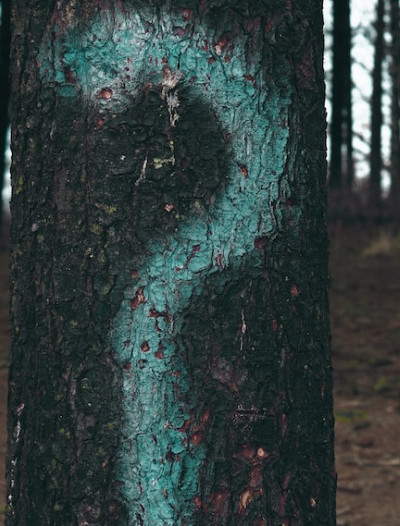 Actions are things we do. This lesson is about how to conjugate the verb do in English. There are different tenses. This is about the present tense.
Actions are things we do. This lesson is about how to conjugate the verb do in English. There are different tenses. This is about the present tense.
As with all verbs in English, the tenses are:
Present
Past
Future
All three are important but I think it’s important to begin with the present tense because it deals with verbs in their base form and overall, I believe it’s an easier and more efficient way to learn and build a foundation from which to build knowledge on this subject.
Why Is It Important To Learn About Do?
Without realizing it, in English we often do not use do in the most effective, efficient, and easy to understand manner. It’s a tiny word and it does more than we realize.
That brings me to my first point.
The word do has an action partner. Yes, it does. It is the word does.
 Allow me to explain.
Allow me to explain.
The words do and does mean the same thing but are used differently depending on who or what the subject is that is doing something.
For example, I do, you do, we do, and they do, but he does, she does, and it does.
It’s important to understand that in English, when people talk about what I do or what someone does, we do not always use the words do or does.
Huh?
That’s right. We use an action verb to say what we do and we do not always say the words do or does.
So, why is that important to understand?
It’s because action verbs have at least two different forms depending who or what the subject in the sentence is.
What do I mean?
For example, I, you, we, or they write a sentence but s/he writes a sentence.
We do not usually say I, you, we, or they do write a sentence and we do not usually say s/he does write a sentence but we could and it is correct,.
The operative action verb is the word write. If we do use do or does, we don’t have to deal with the change of the word write to writes.
That may not seem like a big deal for someone whose first language is English, but to someone whose first language is not English, it does make a difference.
We do use do or does to show emphasis but we do not use do or does much of the time.
I teach ESL students that when an action verb does end with the letter s, such as when write becomes writes, that is when we do change do to does.
I do want students to understand that they are dealing with action verbs and that do and does do show action. It takes two words rather than one to say something, but the base form of the verb does stay the same.
Why is that important?
What If We Do Change The Statement To A Question?
 That’s a very good question. I’m glad you asked. Oh wait, I’m the one who asked.
That’s a very good question. I’m glad you asked. Oh wait, I’m the one who asked.
But seriously, this is where many students get confused.
Let’s look.
If we do change the statement, she writes a sentence or she does write a sentence, to a question, the correct way to ask is to say, “Does she write a sentence?”
We don’t say, “Does she writes a sentence?”
I’ve seen too many students struggle with this simple issue. Once they do get in the habit of properly inserting do or does in front of action verbs, it becomes easier for them to make a statement into a quesiton.
Meanwhile, the base form of the action verb does remain the same.
With so many variations and exceptions in the English language, I think it’s important fo find any sort of consistency possible and reduce the number of rule changes whenever possible.
What If We Do Change A Positive Statement To A Negative Statement?
 That is yet another very good question.
That is yet another very good question.
Using the same example as above, “He does write a sentence.” or “He writes a sentence”, if we do change it to a negative statement, it is proper to say he does not write a sentences rather than he does not writes a sentence.
In other words, it’s easier for students to learn when to use do and does than it is to remember when to change or not change action verbs that do end with an s or do not end with an se.
Do We All Need To Use Do And Does Like ESL Students?
The truth is, it is gramatically correct to use do and does before action verbs, although, in general, those of us whose primary language is English, we don’t normally do it that way unless we are trying to emphasize a point.
For example, Do you write a sentence? A simple yes or no is a perfectly acceptable answer. But, if we say, “Yes, I do!”, it emphasizes the fact that we do. It’s not just a simple yes.
It is second nature to us but it’s little nuances like this that make learning English more of a challenge than it needs to be.
Whether learning a new language or just about anything, it’s best to keep it as simple as possible, at least in the beginning.
Assuming a student plans (does plan) to continue learning, once they get (do get) comfortable with the basics, then they can be taught the variations and exceptions, of which there are many in the English language.
The bottom line is, the verb(s) do/does is/are one of the most basic and common verbs in English and probably other languages as well.
I try to make the building blocks as simple and understandable as possible so that everyone, beginners and experienced English speakers alike can understand.
Let’s Wrap It Up
 This has been a basic lesson about how to conjugate the verb do in English. It is part one, which deals solely with the present tense of this simple but vital word.
This has been a basic lesson about how to conjugate the verb do in English. It is part one, which deals solely with the present tense of this simple but vital word.
We will deal with the past and future tenses in the future.
There is no reason to complicate it now..
I hope it makes (does make) sense to you.
Please (do) leave questions and comments in the space below. I (do) promptly respond.

Thank you for providing this informative lesson on conjugating the verb “do” in English, and you’ve highlighted the significance of understanding its usage in the present tense. It’s clear that “do” and “does” play crucial roles in constructing sentences, particularly in forming questions and negative statements. However, I’d like to inquire about the historical context or origins of this usage. How did English come to adopt this structure of using “do” and “does” in questions and negative statements with action verbs, and has it always been a part of the language, or did it evolve over time? Understanding the historical development of such grammatical structures could provide valuable insights into the language’s evolution
Thanks for your comments Ashley. Unfortunately, I don’t have the answers to your questions. When I do find out, I will let you know. If you beat me to it, please let me know. They are interesting research questions. Feel free to leave me comments and questions any time. I will promptly reply.
KBob
Hello KBob,
Great post on conjugating the verb ‘do’ in English! I wanted to let you know how much I appreciated your approach to simplifying the subject.
Your method of breaking down complex concepts into smaller, more digestible pieces made it much easier for me to understand the material.
In fact, I found myself applying your approach to other subjects as well, and it has made a significant difference in my ability to learn and retain information.
Will you cover the past and future tenses of ‘do’ in upcoming posts? I’m curious to know.
Thank you for sharing!
Thanks for your comments and your inquiry. I will absolutely cover past and future tenses with both the verbs do and be.
I’m glad to learn that the lesson helped you.
Feel free to leave comments and questions any time. I will promptly reply.
KBob